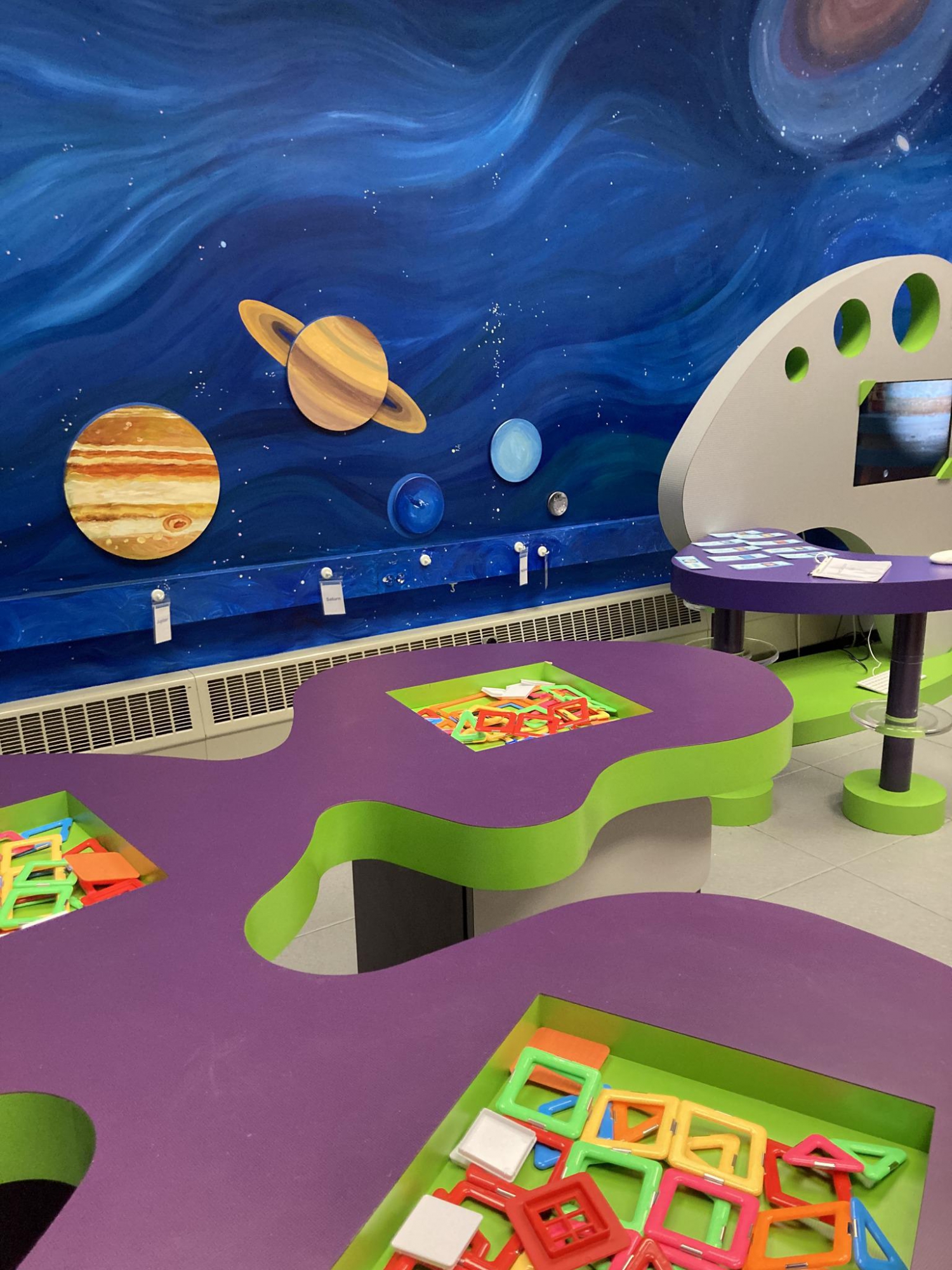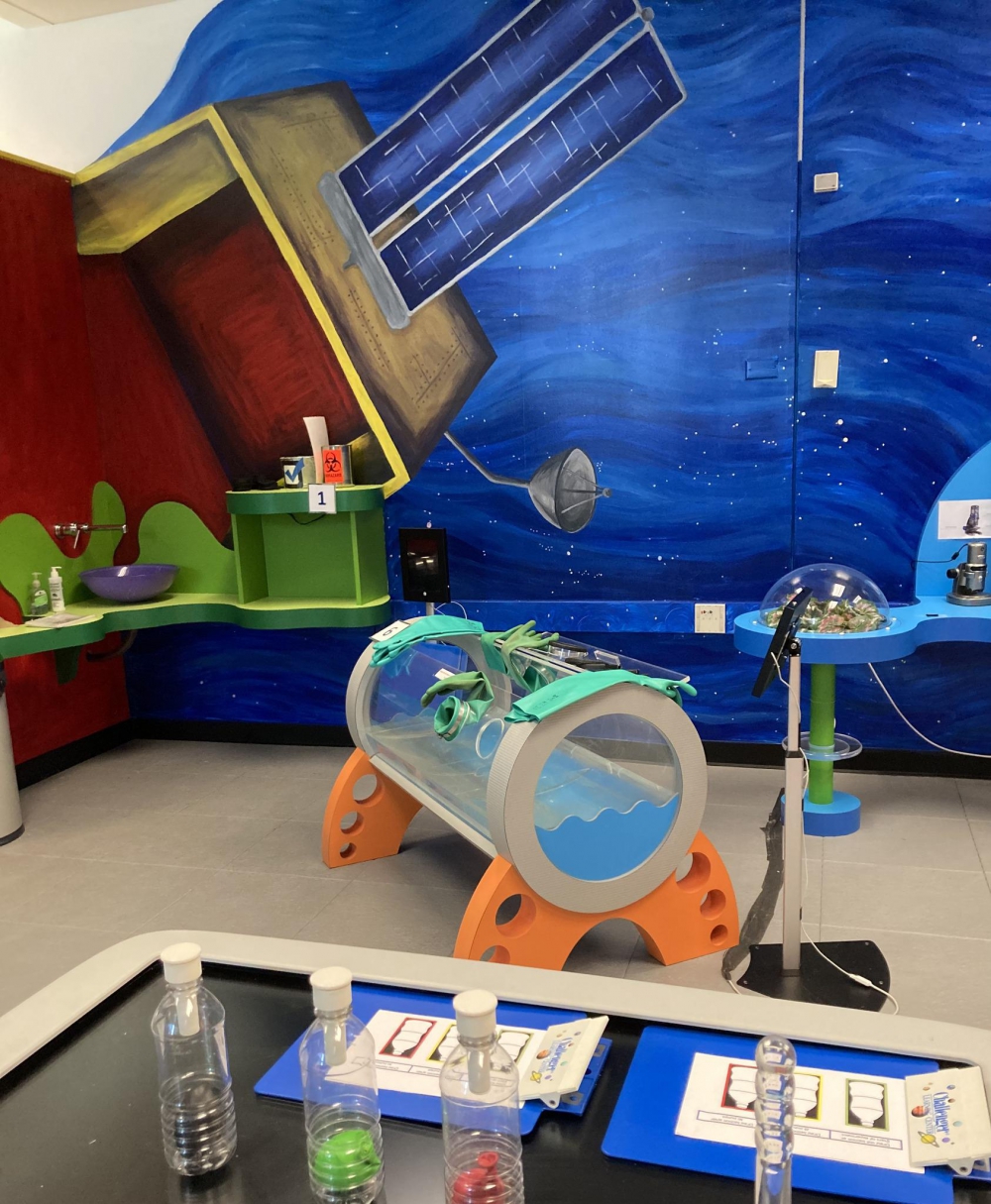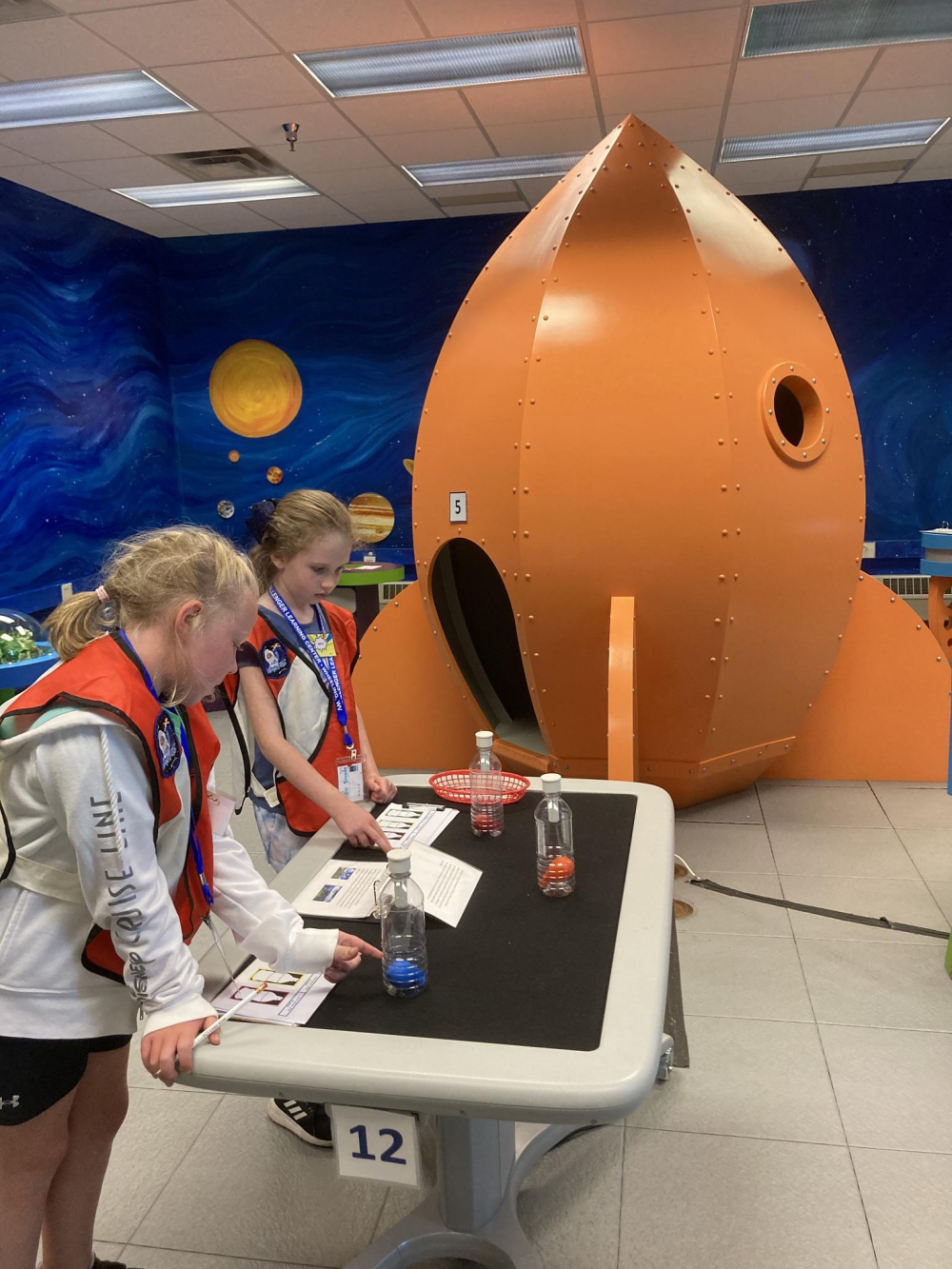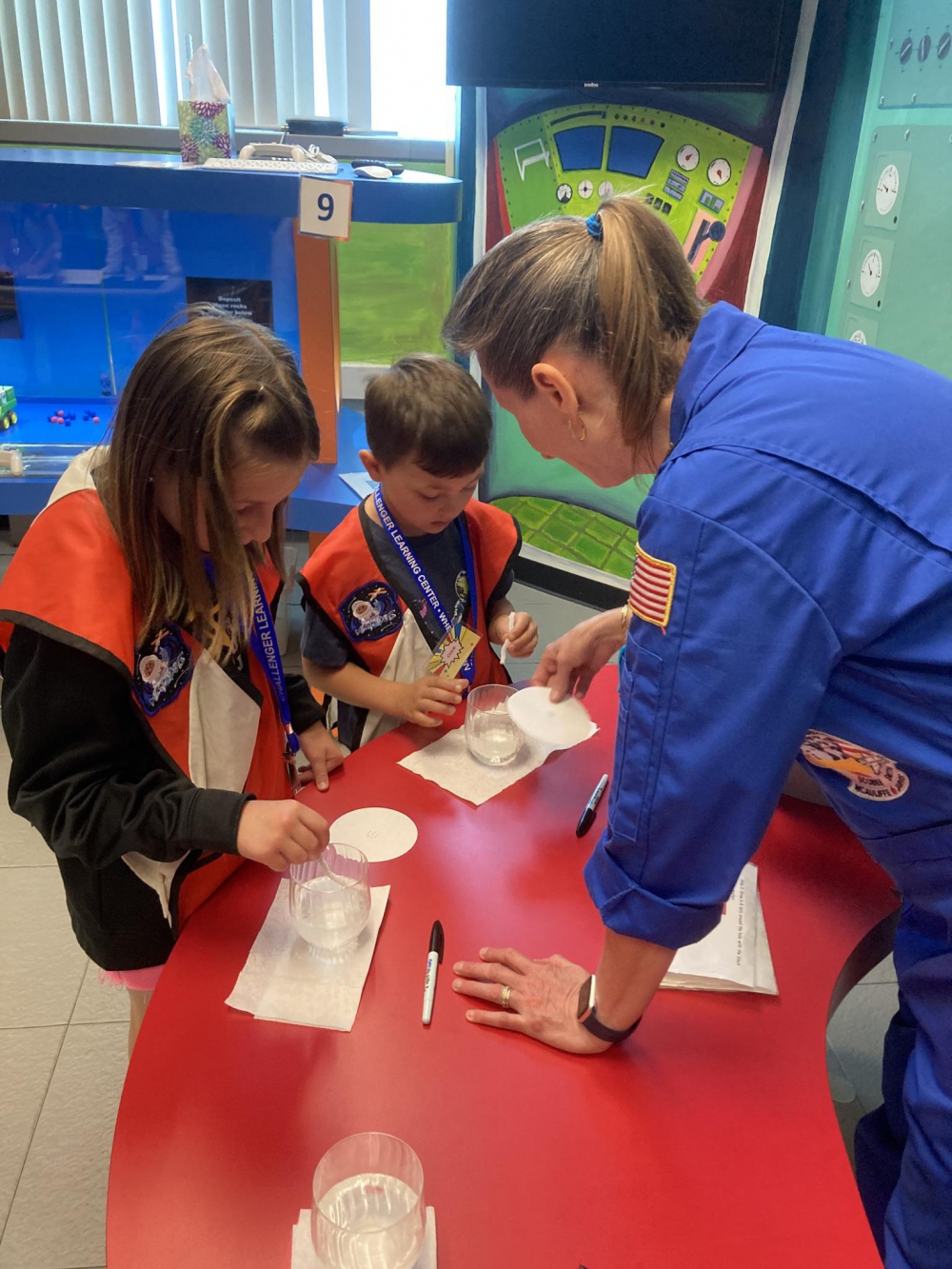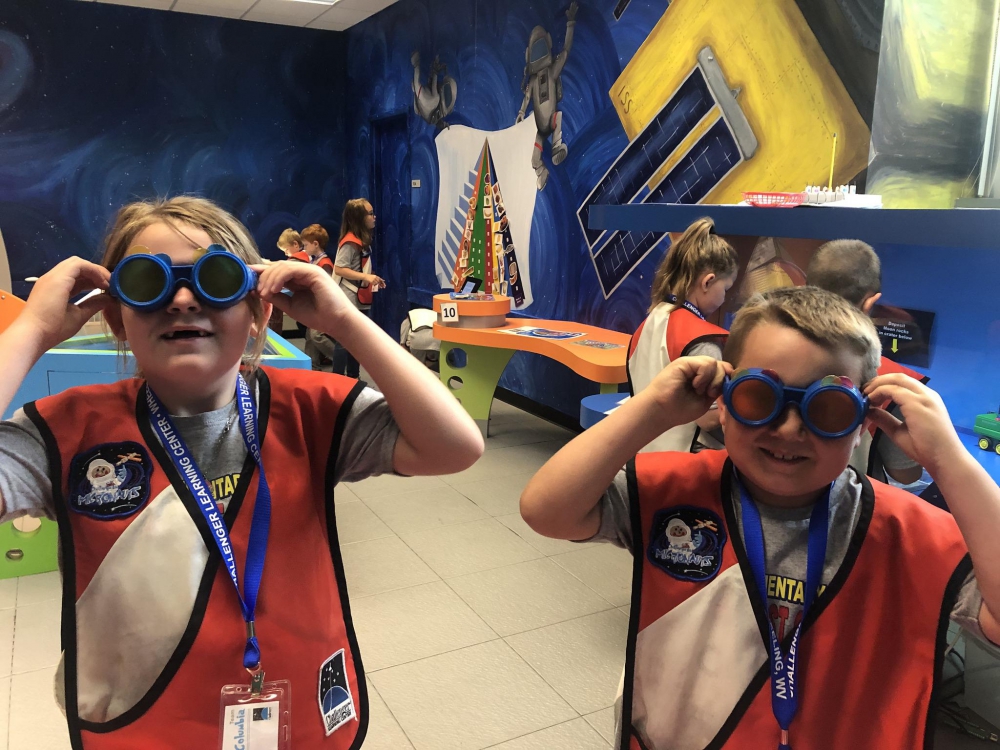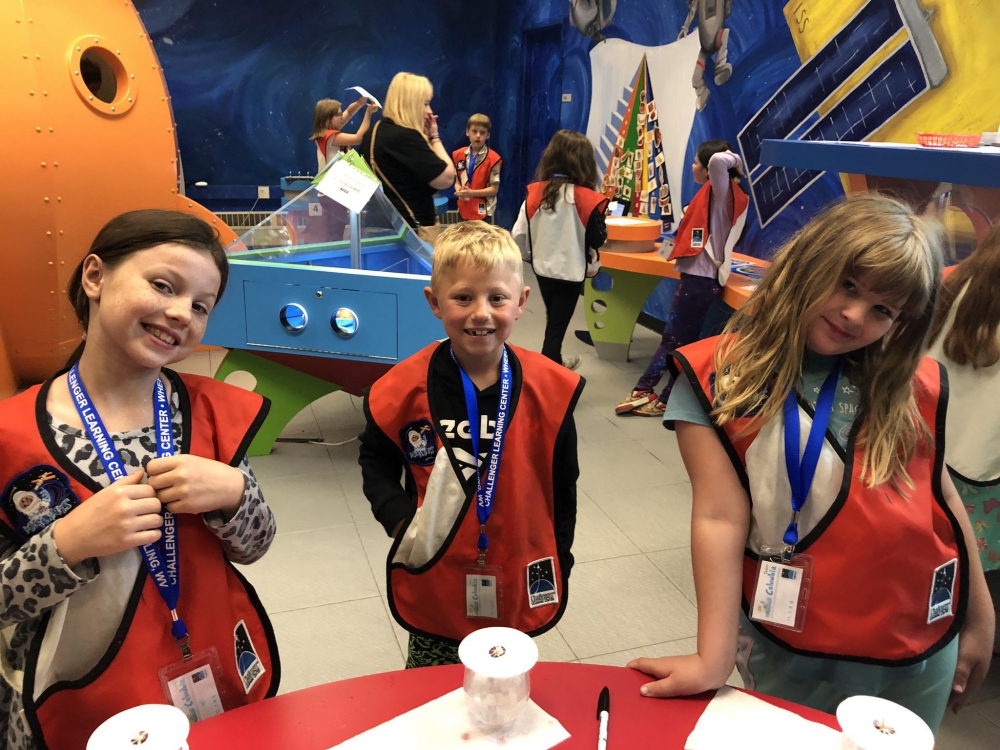Micronauts (K-3)
Mission Scenario
The allure of space is forever present in the minds of children. How do astronauts get into outer space? Do they travel in a rocket ship or a space shuttle? How long does it take to get to the Moon? The Challenger Learning Center invites our youngest explorers to unlock the mysteries of space and join the ranks of thousands of students who have already visited the Moon, Mars, and beyond.
Designed especially for students in kindergarten through third grade, our Micronauts area transports students from planet Earth to the International Space Station. Traveling 230 miles above Earth’s surface, students conduct hands-on activities at various stations. Each of these 12 stations was designed to target key critical thinking skills through the exploration and discovery of basic science, mathematics, and language arts concepts.
The Micronauts experience is a one-hour simulation. During a typical mission students rotate through 3-4 stations working as scientists, mathematicians, and engineers. At the nutrition station, for example, students learn the importance of proper, balanced diets as they devise a menu for two astronauts that meets the USDA Food Guide Pyramid guidelines. Students work in our underwater glovebox to simulate the training that astronauts must undergo as they prepare for a gravity-free environment in space. Whatever the station, your students are guaranteed to be challenged and excited to learn—while having a great time.
Micronauts Exploratory Activity
To complement our Micronauts mission and to enrich your students’ experience at the Challenger Learning Center, we have developed several one-hour exploratory activities. These content-rich, interactive activities capture the interest of your students as they become the next generation of planetary scientists to explore the scientific principles and technologies that enable scientists to learn about our solar system.
